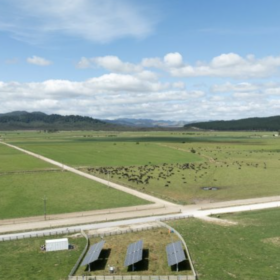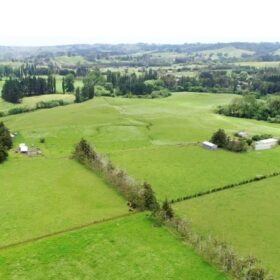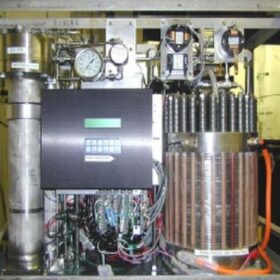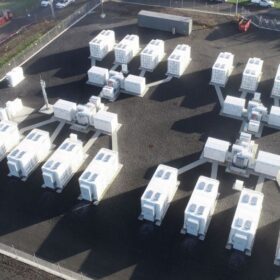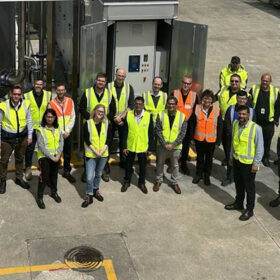Demand growing for agrivoltaic projects in New Zealand
New Zealand solar farm developer Lightyears Solar has turned on the Waingawa Solar Farm, a 4.7 MW community agrivoltaic project, using 7,700 solar panels.
Taslink plans deep-sea cable to connect Australia, New Zealand
New Zealand venture Taslink has announced plans to build a 2 GW to 3 GW capacity high-voltage cable linking Australia and New Zealand to facilitate the day-to-day trading of electricity between the two nations.
Airport-based green hydrogen test plant paves way for zero emissions aviation
Aotearoa-based green hydrogen solutions company Fabrum has opened an advanced liquid hydrogen test facility in partnership with Christchurch International Airport, believed to be the first at an airport that can provide hydrogen on demand.
New Zealand venture moves forward with 400 MW solar project
Nova Energy and Meridian Energy have partnered to construct the 400 MW Te Rahui solar farm, which will become the largest solar installation in New Zealand.
New Zealand steps up approvals process for large-scale PV projects
Ten large-scale solar farms planned for New Zealand’s North and South islands are among 22 renewable energy projects with a combined capacity of 3 GW that have been listed for inclusion in the government’s “one-stop shop” fast-track approvals process.
Property owners look to large-scale solar to revitalize land
Renewables developer Lodestone Energy will build a 220 MW solar farm on one of New Zealand’s iconic high-country grazing properties, with the landowners targeting the PV facility to help rehabilitate redundant land.
Singapore fund acquires solar developer in New Zealand
Singapore-based renewable energy fund manager SC Oscar has purchased New Zealand solar project developer Rānui Generation as part of its strategy to build a portfolio of renewable energy assets in New Zealand and Australia.
The Hydrogen Stream: 1.2 TW of electrolyzers globally in development
Aurora Energy Research says it has recorded a sharp increase in green hydrogen projects, with 90% of them in early phases of development, while E.ON says that Germany’s hydrogen ramp-up is stuck due to an investment backlog.
New Zealand welcomes first big battery to national grid
New Zealand’s transition to a renewable energy future has taken a significant step forward with the nation’s first grid-scale battery energy storage project now offering injectable reserves to the electricity market for the first time.
Fonterra reveals high-temperature industrial heat pump
Fonterra, a New Zealand-based dairy producer, has started operating a new heat pump in combination with a solar thermal facility. The hybrid project transforms excess heat from chillers and compressors into a heat source for industrial use.



